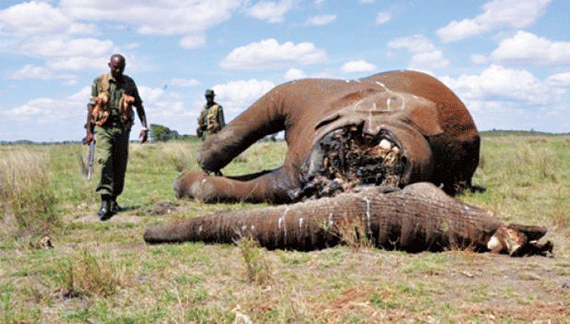
REPORTS suggesting a cover-up in the extent of the Hwange National Park disaster where tens of elephants have died due to cyanide poisoning in the past few months must be taken seriously.
The Zimbabwe National Parks Management Authority (Zimparks) last week put the death toll at 106 after 11 more carcasses of elephants were discovered at the giant game reserve.
However, at the weekend international media was awash with stories that the number could be more than 300.
There were also allegations that countless other wild animals had succumbed to cyanide, an insinuation that the nation has not been told the full extent of the devastation.
The story was broken by The Telegraph newspaper of Britain and was based on statements by professional hunters and conservationists who have reportedly conducted aerial surveys at the park.
It would be hard to disapprove of their evidence in the absence of a convincing account by Zimparks to rebut it.
The disaster that has been blamed on well-connected syndicates who use desperate villagers to do their dirty work has exposed the authority’s lack of capacity.
Corporates have responded by donating vehicles to Zimparks and there are efforts to re-engage game rangers who had left employment to beef up anti-poaching programmes.
- Chamisa under fire over US$120K donation
- Mavhunga puts DeMbare into Chibuku quarterfinals
- Pension funds bet on Cabora Bassa oilfields
- Councils defy govt fire tender directive
Keep Reading
The intervention may be a little too late, but the need for a thorough investigation into the extent of the damage cannot be ignored.
Cyanide is a very dangerous chemical and its disposal at watering holes at the Hwange National Park also poses a serious danger to villagers living in settlements bordering the game reserve, especially during the rainy season.
Zimparks has to approach people with the resources to carry out aerial surveys that would determine the extent of the poaching and poisoning of water holes.
The authority, working with the Environmental Management Agency, would also have to come up with a mitigation programme to ensure that people’s lives are protected.
All efforts should now be put on limiting the damage and putting in place measures that would prevent such a tragedy from recurring.










